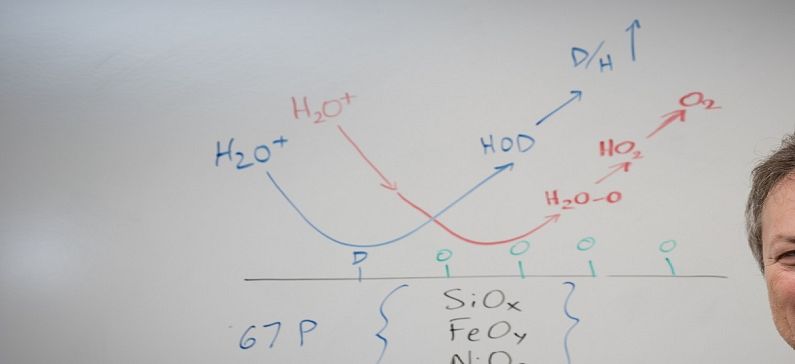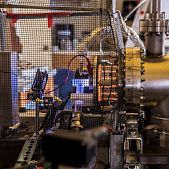
Sheds light in the mystery of comets
Konstantinos Giapis is Professor of Chemical Engineering at the California Institute of Technology (Caltech). The Greek chemical engineer has figured out how to explain a nagging mystery in space—why comets expel oxygen gas, the same gas we humans breathe.
He graduated in 1984 from the School of Chemical Engineering of the NTUA in Athens, obtained his PhD in 1989 from the Department of Chemical Engineering of the University of Minnesota and until 1992 he conducted a post-doctoral research at AT & T Bell Laboratories in New Jersey. Giapis studies chemical reactions involving high-speed charged atoms, or ions, colliding with semiconductor surfaces as a means to create faster computer chips and larger digital memories for computers and phones.
The discovery that comets produce oxygen gas—also referred to as molecular oxygen or O2—was announced in 2015 by researchers studying the comet 67P/Churyumov–Gerasimenko with the European Space Agency’s Rosetta spacecraft. The mission unexpectedly found abundant levels of molecular oxygen in the comet’s atmosphere. Molecular oxygen in space is highly unstable, as oxygen prefers to pair up with hydrogen to make water, or carbon to make carbon dioxide. Indeed, O2 has only been detected twice before in space in star-forming nebulas.
Scientists have proposed that the molecular oxygen on comet 67P/Churyumov–Gerasimenko might have thawed from its surface after having been frozen inside the comet since the dawn of the solar system 4.6 billion years ago. But questions persist because some scientists say the oxygen should have reacted with other chemicals over all that time.
Konstantinos Giapis, began looking at the Rosetta data because the chemical reactions happening on the comet’s surface were similar to those he has been performing in the lab for the past 20 years.
“I started to take an interest in space and was looking for places where ions would be accelerated against surfaces,” says Giapis. “After looking at measurements made on Rosetta’s comet, in particular regarding the energies of the water molecules hitting the comet, it all clicked. What I’ve been studying for years is happening right here on this comet.”
In a new Nature Communications study, Giapis and his co-author, postdoctoral scholar Yunxi Yao, demonstrate in the lab how the comet could be producing oxygen. In other words, the new research implies that the molecular oxygen found by Rosetta need not be primordial after all but may be produced in real time on the comet.
Other astrophysical bodies, such as planets beyond our solar system, or exoplanets, might also produce molecular oxygen with a similar “abiotic” mechanism—without the need for life. This may influence how researchers search for signs of life on exoplanets in the future.











